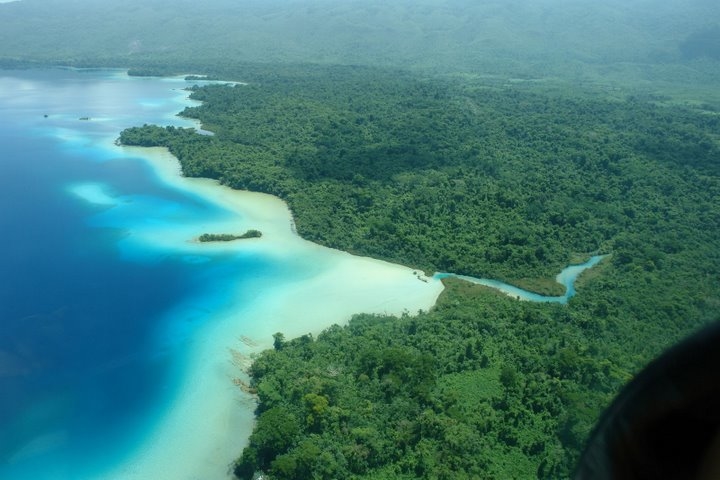Miramar Lagoon, in the Lacandon Jungle, Mexico. Image by Carlos Rojas (de Picasa) [Public domain], via Wikimedia Commons
About seven years ago, during my first lecture in college, an environmental engineering teacher asked us, his class, to close our eyes and picture the rainforest. He asked us to imagine its sounds, its touch, its scents, its colors and even its taste. After letting us wander around our imaginary paradises for some minutes, he asked each of us to share what we had experienced. We mentioned the singing of the birds, the colorful flowers, ancient and endless trees and majestic jaguars. As our teacher noted, none of us had seen humans in our mental rainforests.
Sometimes, we unconsciously think of wholes as the sum of their parts, and we tend to think that we can study those parts in isolation. For example, everyone in that group had seen a forest before. We either had been tourists there, passed in the middle of one while driving in the highway, or had even visited communities who live there. Although in the three cases humans are interacting with nature and are part of the same whole, our minds simplified those interactions and decided to focus on a nature-only forest.
While working with sustainability projects, the isolated thinking can be a massive threat to our project success. For example, I recently read about the Volta Basin, located mostly in Ghana and Burkina Faso, but also in Mali, Togo, Benin and Ivory Coast. Part of the basin has struggled with drought for a long time and might be struggling with it even longer if climate change brings unfavorable conditions. Many small reservoirs have been constructed in the region to fight the drought, some of them being more successful than others are. Interestingly, the factors that make reservoirs more or less successful in tackling the problem were not technical, but social. For a reservoir to be a successful solution, its design had to consider local social rules and traditions. Therefore, when the technology solution (reservoir) was designed in isolation from the natural and human context, the project failed.
Currently, as an engineer learning about sustainability transitions, I would like to share one lesson from the rainforest anecdote and one lesson from the reservoirs example. First, I try my best to keep in mind that a whole is more than the sum of its parts. Nowadays, when I imagine a rainforest, I still remember all its sounds, touch, scents, colors and taste. However, I also think about its interactions with humans, including the goods and services that we receive.
Second, I keep in mind that technological solutions are always in a human and natural context. Thus, when I think of technology solutions for human problems, such as building reservoirs to fight drought and hunger, I know that those technological solutions are located in human and natural environments.
Now, my renovated mental rainforest has people, nature and technology. To me, those three elements are part of the same whole, and I believe that we are part of the ecosystems and should use them for our well-being. However, I also think that we can only achieve human well-being when nature is healthy; likewise, human well-being also contributes to have a healthy nature. The same goes with sustainability transitions. It is easier to be engaged and to take action when we understand that while doing so, we are taking steps towards our own happiness and well-being.
Hens, L. (2006). Indigenous knowledge and biodiversity conservation and management in Ghana. Journal of human ecology, 20(1), 21-30.
Van de Giesen, N., Liebe, J., & Jung, G. (2010). Adapting to climate change in the Volta Basin, West Africa. Current science, 98(8), 1033-1037.
